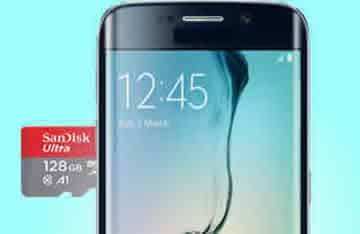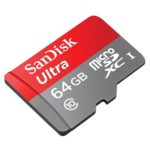What size external storage will my Android phone or tablet use?
Are you constantly running out of storage space on your Android device? With today’s apps and media files taking up ever-increasing amounts of space, it’s easy to find yourself struggling to keep everything you need on your phone or tablet. Thankfully, Android devices offer the flexibility of using external storage to expand your storage capacity. But with a wide range of SD card sizes available, it can be tough to decide which one is right for you.
Here’s what you need to know about choosing the right size external storage for your Android device:
1. Consider Your Usage:
- Light User: If you primarily use your phone for basic tasks like calling, texting, browsing the web, and light social media use, a smaller SD card (16GB-32GB) might be sufficient.
- Moderate User: If you listen to music, take photos, or play casual games, you’ll likely need a larger SD card (64GB-128GB).
- Heavy User: Do you take high-resolution photos and videos, play demanding games, or store large amounts of music and movies? Opt for a large capacity SD card (256GB-512GB or even 1TB) to ensure you have adequate storage space.
2. Check Your Phone’s Compatibility:
- MicroSD vs SDHC vs SDXC: Confirm your phone’s compatibility with different SD card formats. Most modern devices support microSDHC (up to 32GB) and microSDXC (up to 1TB).
- UHS Speed Class: Higher UHS Speed Classes (e.g., UHS-I U3) indicate faster read and write speeds for better performance with apps and media files.
3. Read/Write Speed:
- Class: Class 10 is the minimum for basic functionality. For smoother app performance and faster transfer speeds, consider Class UHS-I or UHS-II.
- Video Speed Class: V30 or V60 ensures smooth recording and playback of high-resolution videos.
4. Budget:
- Larger capacity and faster speeds come at a higher price. Set a budget and prioritize features based on your usage needs.
5. Brand and Reliability:
- Choose reputable brands known for quality and performance.
- Read reviews and compare warranties before making a purchase.
Additional Tips:
- Manage your storage: Regularly review and delete unused apps, photos, and videos to free up space on your internal storage.
- Move apps to SD card: Many apps can be moved to the SD card to free up internal storage space.
- Cloud storage: Consider using cloud storage services like Google Drive or Dropbox for additional storage needs.
By understanding your storage needs, checking phone compatibility, and choosing the right size and features, you can find the perfect external storage solution for your Android device and ensure you never run out of space again.
What Size SD Card Can My Phone Use?
The size of SD card you can use on your Android phone depends on a few factors, including:
- The model of your phone. Some phones have a limit on the size of SD card they can support.
- The format of the SD card. There are three main formats: SDHC (up to 32GB), SDXC (up to 2TB), and SDUC (up to 128TB). Not all phones support all formats.
The answer to what size you can use will vary with each Android device’s model and manufacturer. So my response is a generic response which is true for most Android devices. Some older Android devices will not support any external storage devices, however, most newer Android devices do allow for the insertion of additional memory. What size external storage will your Android phone or tablet use? You must refer to the manufacturer’s documentation to see what size memory card your Android device can use.
Here is a table that shows the maximum SD card size for some popular Android phones:
| Phone Model | Maximum SD Card Size |
|---|---|
| Samsung Galaxy S23 | 1TB |
| Google Pixel 7 | 2TB |
| Motorola Moto G Power | 512GB |
| OnePlus Nord 2 | 256GB |
| Xiaomi Redmi Note 11 | 512GB |
Note that these are just the maximum sizes. Your phone may be able to support a smaller SD card.
Frequently Asked Questions (FAQ) about Choosing the Right SD Card for Android
What size SD card do I need?
This depends on your individual needs and usage. Here’s a general guide:
- Light User: 16-32GB (basic tasks like calling, texting, light browsing)
- Moderate User: 64-128GB (music, photos, casual games)
- Heavy User: 256GB-1TB+ (high-resolution photos/videos, demanding games)
What is the difference between SDHC, SDXC, and SDUC?
- SDHC: Up to 32GB, commonly used for older devices
- SDXC: Up to 2TB, standard for most modern devices
- SDUC: Up to 128TB, newest format, not widely supported yet
What is UHS Speed Class and why does it matter?
UHS Speed Class indicates read/write speeds:
- UHS-I U1: Minimum for basic functionality (10MB/s)
- UHS-I U3: Recommended for smoother app performance (30MB/s)
- UHS-II U3: Best for demanding tasks (300MB/s+)
What is Video Speed Class and why does it matter?
Video Speed Class ensures smooth recording and playback:
- V30: Minimum for Full HD video (30MB/s)
- V60: Recommended for 4K video (60MB/s)
- V90: Ideal for high-resolution or high-frame-rate video (90MB/s+)
What brands are reputable for SD cards?
Samsung, SanDisk, Lexar, PNY, Kingston, and Transcend are popular choices known for quality and performance.
How do I ensure the SD card is compatible with my phone?
Check your phone’s manual or manufacturer website for supported SD card formats (SDHC/SDXC/SDUC) and capacity limitations.
Can I move apps to the SD card?
Yes, many Android phones allow app transfer to the SD card. This frees up internal storage space for other purposes.
Should I prioritize size, speed, or brand?
Consider your needs:
- Size: If you need a lot of storage, prioritize size.
- Speed: If you use demanding apps or record high-resolution media, prioritize speed.
- Brand: Choose a reputable brand for quality and reliability.
What are some additional tips for choosing an SD card?
- Read online reviews and compare features before purchase.
- Set a budget and prioritize features based on your usage.
- Regularly manage your storage to free up space on your internal storage.
- Consider cloud storage services as an additional storage option.
Additional helpful information:
- Visit this post to read more about using an USB Flash drive on your Android phone or tablet “Connect USB Storage to your Android…“
- To learn more about using a SD Memory card on your Android device “How to use a SD Memory card on Android…“
- Which are the best SD cards to use on an Android phone? “Best microSD Cards for Android”




